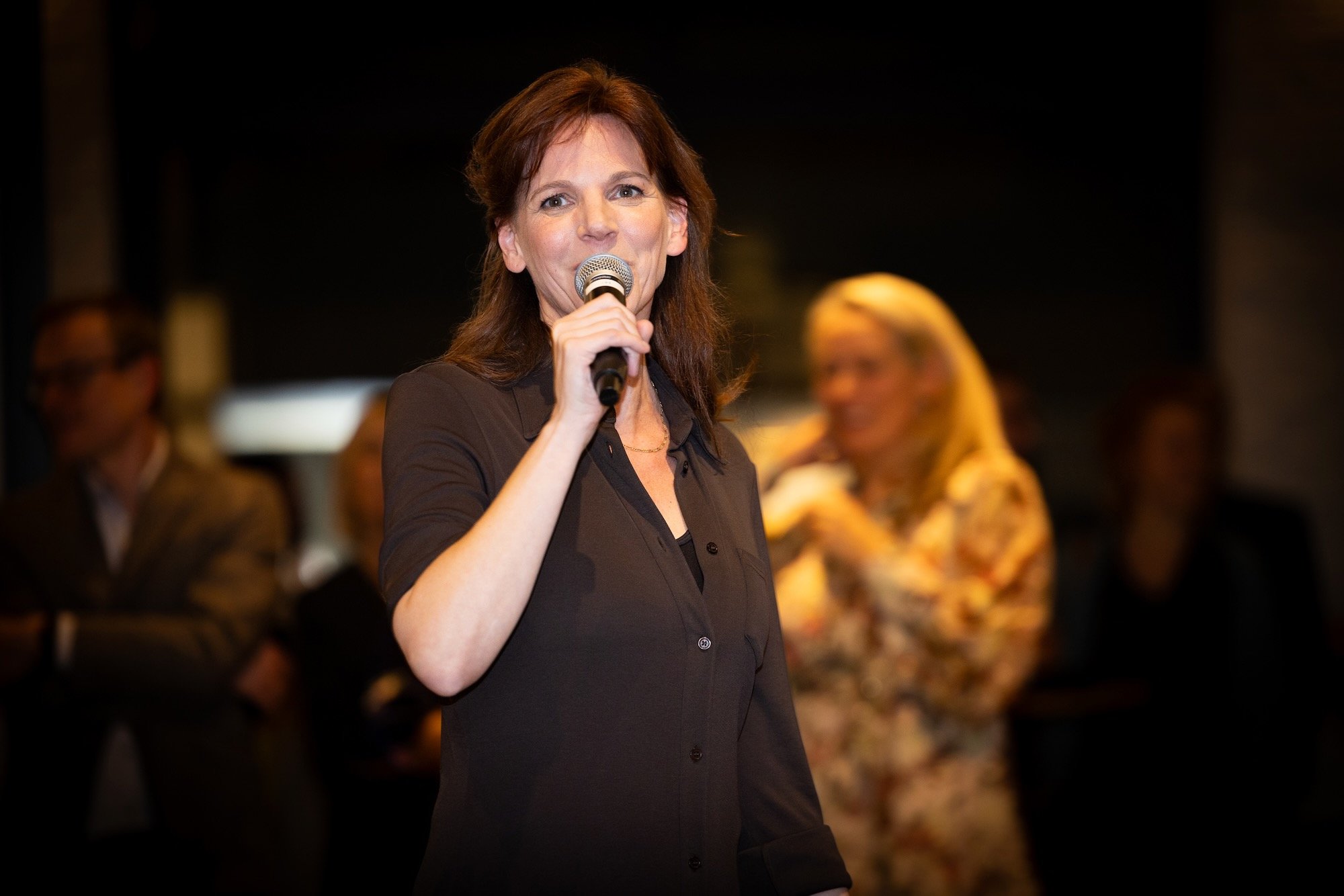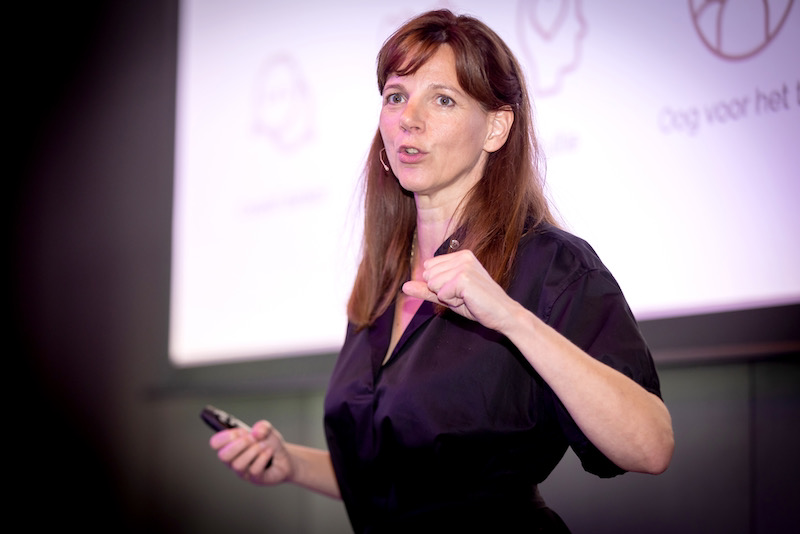Paul Carremans
HOW TO ADAPT YOUR LEADERSHIP STYLE TO CURRENT BUSINESS NEEDS
Ann Baeke, who teaches natural leadership, says: “We are evolving from a personal culture, where people focussed on individual successes, to a network culture, where our personal image becomes subordinate to what we can do for the group. How can we bring people together and share things? Younger employees are looking for meaningful work and no longer accept a boss who says: ‘You will do this because I say so’. To keep these talented people committed and motivated, it is important that leaders drop their masks and start communicating not only from a rational point of view, but from the whole of their inner being. Only then they can add value to the team.”
When Ann Baeke started coaching people towards natural leadership, it took her a lot of effort to bring her message across, because that message was unconventional. It goes against everything people used to think about leadership. But gradually, as they saw that the leadership styles of the past were no longer working, they became more open to the idea. Leadership methods that were applied until now frequently lead to burn-out, depression and even suicide. “In Belgium, employee engagement is down to 12%,” says Ann. “Companies are craving for motivated teams of people who can take initiative instead of waiting for their boss to tell them what to do. But in order to achieve that, they have to dare to show their potential and stop doing what they think is expected from them.”
According to Ann, the attitude of the leader determines 70% of the engagement of the team. “I ask people about bosses who brought out the best in them versus bosses they didn’t like to work for. Then I ask them what the ‘good’ boss did that made him so good.”
Ann goes on explaining that most of today’s leaders are good at rational and structural thinking. Without those skills they simply wouldn’t have gotten the job. They are masters at everything that has to do with the masculine side of us. “We all have a masculine and a feminine side,” she states. “Today’s leaders excel at making decisions, working with figures, analytical thinking, speed, … all those things that come from the masculine energy, which is absolutely necessary in a leader. But we also all have a feminine side, which has more to do with feeling good, togetherness, collaboration, joint focus, supporting each other and trust. Leaders need to self-reflect and show their team that they too make mistakes and that it is alright to make mistakes and learn from them.” Ann quotes Jeff Bezos, CEO of Amazon, who says: “I believe that my people have 1 chance out of 10 to come up with a great initiative. But if I believe that, I also have to accept that they will fail 9 times out of 10. If I don’t allow them to fail, I cannot take advantage of that 1 chance.” “Most leaders don’t dare to admit that they make mistakes,” continues Ann, “because they fear that it will be perceived as an indication that they are not up to the job. As a result, their collaborators are afraid to make mistakes and therefore don’t experiment with new ideas. A good leader has to find the courage to admit to his team that he doesn’t have all the answers, but that he wants to find them together. Your team has to be eager to unite its knowledge and capabilities. It is not a vehicle to execute your own ideas. Therefore, you have to dare to show your emotions and follow your intuition, rather than only focussing on rational, structural and analytical thinking, which we also need and which worked fine for decades, but is no longer sufficient in today’s business context. We all carry these qualities inside of us, but we have to dare to open the cage in which we have been keeping them and let them out to do the job.”
“Most of us have been through some pretty serious stuff in our life,” says Ann, now toughing on the psychological side of things. “Things that happened during your childhood, the death of a loved one or a divorce are only a few examples of things that may have had a very strong impact on our personality. As long as we cannot put those unfortunate events behind us, we are stuck with convictions about ourselves, the others, the world: ‘I can’t do it’, ‘I’m not good enough’, ‘It is always my fault’. Those emotions will cause us to put on a mask. Every team comprises people who carry different burdens and wear different masks. This creates tension, which is why I facilitate teams to talk to each other in order to foster peace of mind and enable collaboration. I prefer to start by coaching the CEO, because he is in an exemplary position. If that person succeeds in opening up to his team and showing his vulnerabilities, the others will understand that he is serious about changing his leadership style and the team will become much more transparent as a whole.”
CASE STUDIES
CASE 1
Ann has coached an international team with a Swedish CEO. This man’s parents had developed his personality in a very specific but quite effective way. Ever since he was a child they used to have profound conversations every Sunday, challenging his ideas in the comfortable environment of people who loved him and wanted to support his development. To him, this had become such a normal approach that he applied it to his management team. He broke off every idea that they came up with in an attempt to improve it and get the most out of it. The two other management team members were a Belgian and a Dutchman. Especially the Belgian didn’t feel good about this approach. He felt that nothing he did was ever good enough as every one of his ideas would be countered. After the Swedish CEO had told her this story, Ann encouraged him to share it with his management team, in order to clear up the misunderstanding. So he said to them: “I do this because for me that was a very positive childhood experience. For me it is quite normal to act like this and in fact it is an expression of my concern for you and for the entire organisation.” Once they understood this, the cooperation between these three people improved significantly. Because now, when this happened again, the two other directors could wave their red flag and say: “Hey, hold on! You’re at it again! This is becoming just a little bit too fierce for us!” and then the CEO could adjust his reaction in a way that he could still coach them, without immediately squashing their ideas.
CASE 2
A team that Ann is currently coaching consists of a collection of people who all want to shine; individualists who go for their own interest, who want to profile themselves and have a big need of recognition. During meetings they all want to be heard and keep defending their ideas no matter what. If a team consists of people who all want to have their way, refuse to give in to others, and are not targeting a mutual goal, they get stuck in a status quo. Hence, Ann asked every individual team member to give their views on every other team member and voice out how each one of them supported good collaboration or blocked collaboration. This wasn’t an easy task, because she was expecting people to give very corrective feedback to colleagues that they still had to work with the next day. “It is useless to let them tell me all these things in private, because the other group members are the ones they will have to collaborate with in the end,” is Ann’s reasoning. “If the team has come to a decision that is not supported by one single team member, he has to voice out during the meeting and not at the coffee machine. With a management team, where every manager has his own department, it is important that they all follow what has been decided. If one manager persists in steering his department in a different direction than the one decided during the meeting, the other team members have to have the courage to confront him. Often they expect the CEO to put him straight, but then you don’t have a good team. Most Belgian – and especially Flemish – teams have a tendency to avoid conflict and aim for artificial harmony. They like to pretend that they all get along like a house on fire, while in fact there is a lot of tension in the group. It is only by facing conflict that you can view a problem from different angles.”
CASE 3
Another team used to have a CEO with a very directive leadership style. The new CEO wants to have more self-steering teams. He wants to listen to their input and act on it, something his predecessor never did. The problem here is that people don’t dare to voice out their opinion, because they are still stuck in this culture of fear that was created by a CEO who is no longer in the picture. It is very difficult for the new CEO to convince his people that there is actually another way of doing things. That’s where Ann came in to teach the team that it is OK to have an idea and put it forward and that chances are that something will be done with their idea. She started out by coaching the CEO on how to approach this change by giving examples to his team of things that he did wrong and problems he has faced in the past. This openness of their leader will encourage the other team members to get more involved in the decision making process. “Of course this new culture will slow things down to a certain extent,” says Ann. “Where the previous CEO used to take all the decisions himself, the decision making process will now take a little longer because more people are involved, but when a decision is taken, it will be supported by the majority of the team.”
The complete article appeared in the Spring Edition of PAUL’S PYRAMID, a free newsletter with subscribers in almost 50 countries on 5 continents. Get your own free subscription via this link: http://worldwidewritingservice.weebly.com/newsletter.html



0 reacties